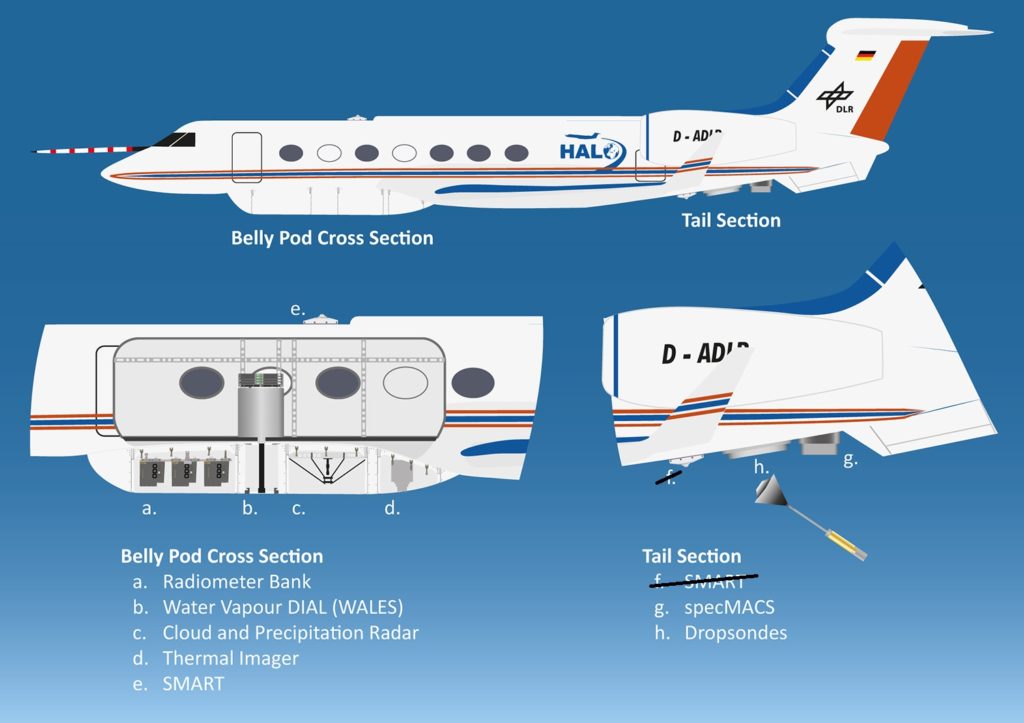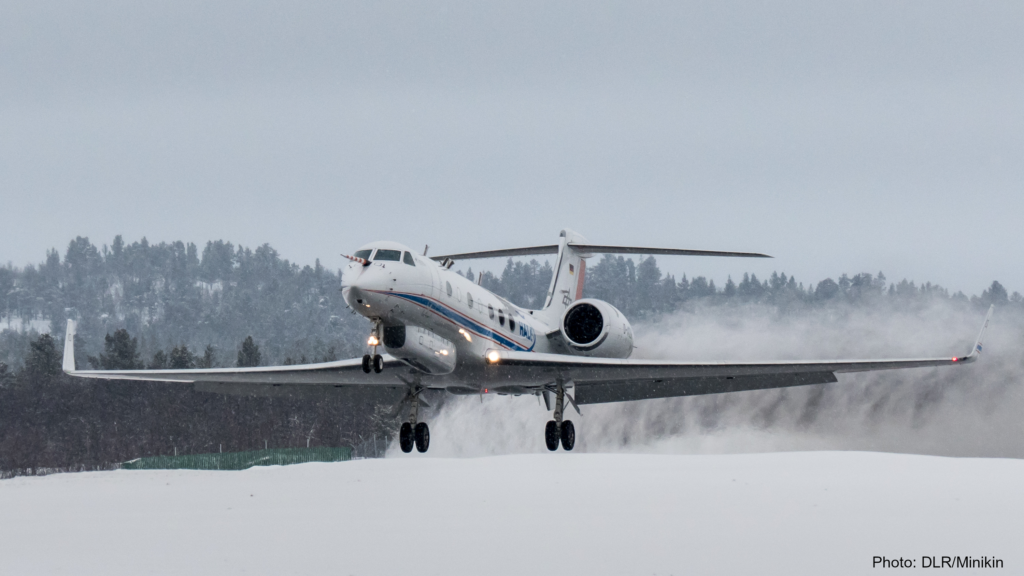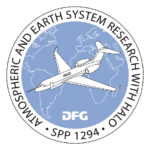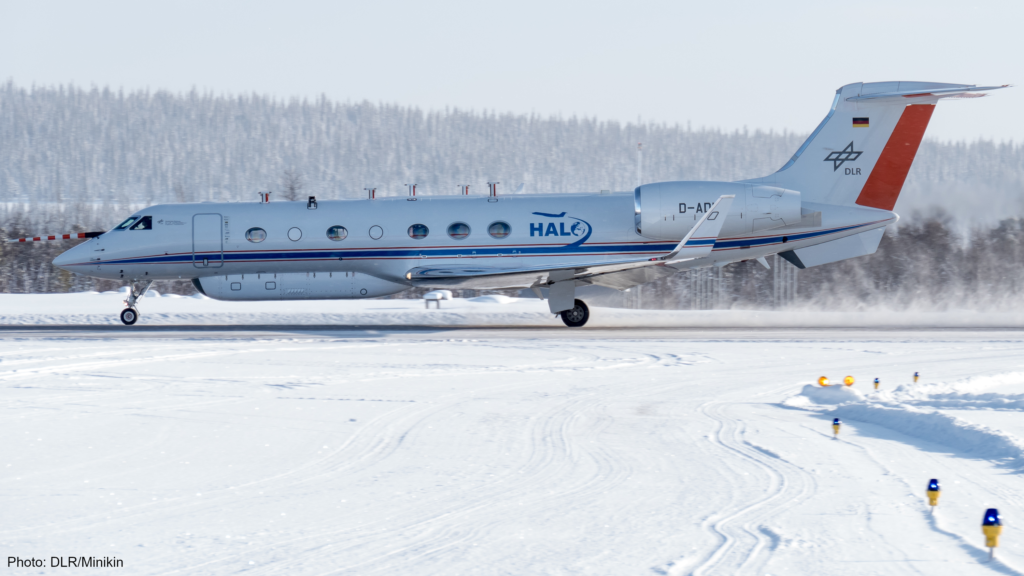
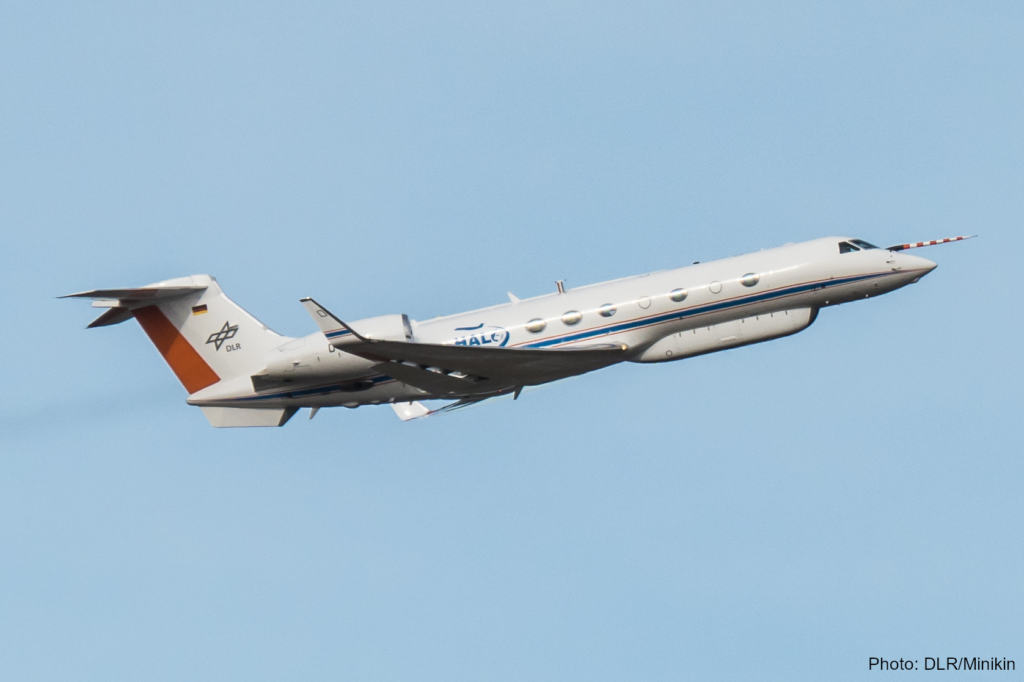
The German high altitude and long-range research aircraft HALO is a modified Gulfstream G-550 aircraft specifically equipped with numerous in situ and remote sensing instruments. It enables measurements up to an altitude of 15 km within a range of 9000 km; HALO may carry an instrumental payload of up to 3 tons.
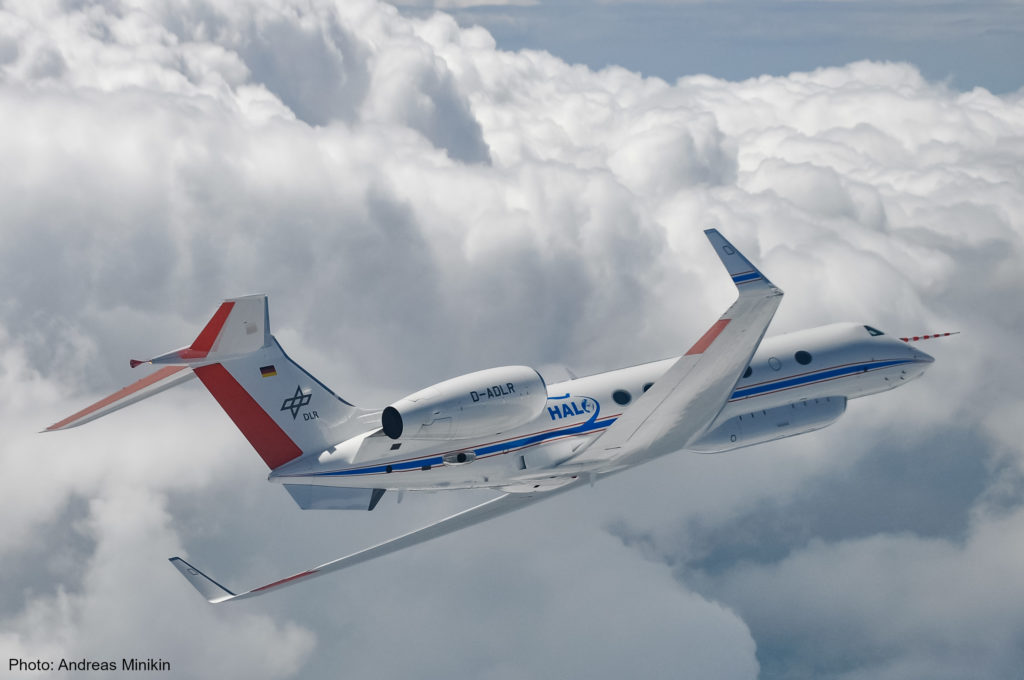
These features allow to study important scientific questions with regard to atmospheric chemistry, atmospheric physics, climate research, satellite validations, and Earth system observations. HALO brings together scientists from a wide variety of disciplines to maximize the scientific output and to carry out multi-disciplinary research.
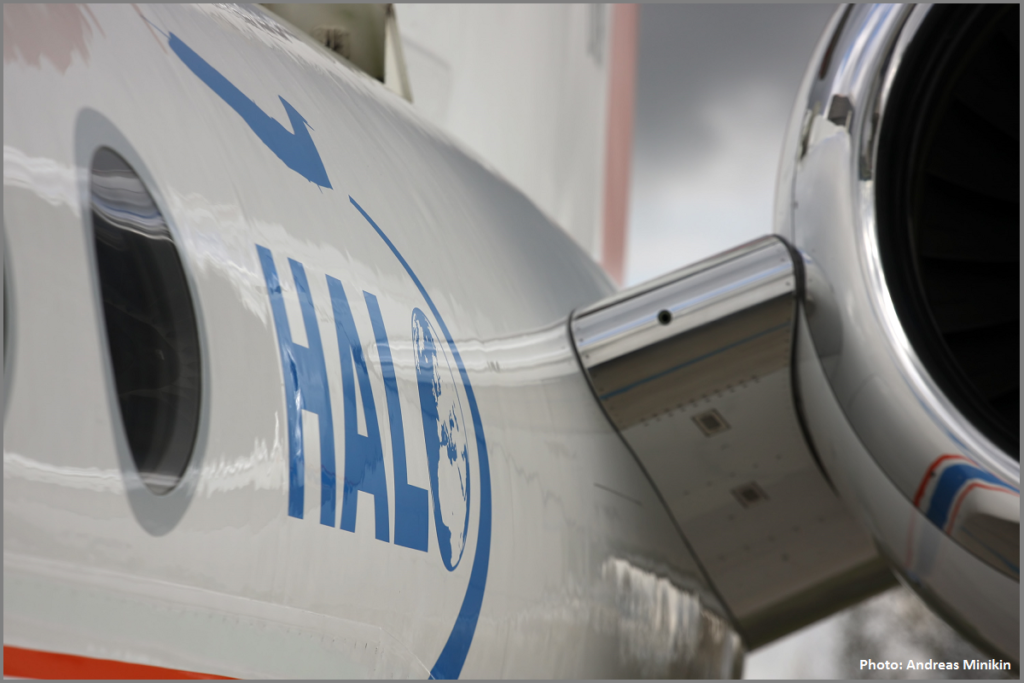
In cooperation with DLR and the Universities of Cologne, Hamburg, Leipzig and Munich, it has been equipped with an extensive set of active (radar/lidar) and passive remote sensing instrumentation, much of which is Nadir staring and mounted in the belly pod on the lower fuselage, supplemented by a dropsonde capability.
Instrumentation
| Instrument | Instrument Description | Operator |
|---|---|---|
| HAMP Cloud Radar | The radar is a nadir staring instrument that measures in the water-vapor window at a frequency of 35.5 GHz (Ka-band). This system, similar to cloud radars operated on the Barbados Cloud Observatory, is operated with a 200 ns pulse length and a pulse repetition frequency of 5kHz. Two receivers provide co- and cross-polarization reflectivity measurements. | MPI-M MI IGM DLR-IPA |
| HAMP Radiometer | Three downward looking radiometer modules passively measure the microwave emissions of Earth’s atmosphere in twenty-six channels probing two water vapor and two oxygen absorption features, as well as window channels. Beam widths of 2.7º to 5.0º and a sampling rate of about 1 s. | DLR-IPA |
| WALES Lidar | WALES operates at four wave-lengths near 935 nm to measure water-vapor mixing ratio profiles covering the whole atmospherebelow the aircraft. At typical flight speeds it has a resolution of 200 m in the vertical and 6 km in the horizontal. The system also contains additional aerosol channels at 532 nm and 1064 nm with depolarization. WALES uses a high-spectral resolution technique, which distinguishes molecular from particle backscatter, to make direct extinction measurements with a resolution of 15 m in the vertical and 200 m in the horizontal.
| DLR-IPA |
| SMART | The Spectral Modular Airborne Radiation measurement sysTem (SMART) measures spectral irradiances from zenith and nadir oriented sensors. An additional nadir looking sensor measures radiances. Measurements span the visible and near infrared (300 nm to 2200 nm) with a 2 nm to 3 nm spectral resolution for wavelengths shorter than 1000 nm and a 10 nm to 15 nm spectral resolution for longer wavelengths. | LIM |
| specMACS | The spectrometer of the Munich Aerosol Cloud Scanner (specMACS) consists of two camera systems, both looking nadir, one in the visible/near-infrared (400 nm to 1000 nm), and another in the short-wave infrared (1000 nm to 2500 nm). The systems produce a spectrally resolved line image with 1312 pixels covering a 32.7º field of view in the visible/near infrared, and with 320 pixels covering a 35.5º field of view in the short-wave infrared. | LMU |
| VELOX | A broadband camera system with a filter to take broadband (7.7 μm to 12 μm) and narrow band images near 8.6μm, 10.8 μm; 11.6 μm; and 12 μm. The camera has 640x512 spatial pixesl for a 21.7° x 17.5° field of view. This gives roughly 6m by 6m spatial resolution for a target at 10 km distance. The camera operates betwen -60ºC and 100ºC with a sensitivity better than 0.05 K. | LIM MPI-M |
| AVAP Dropsondes | AVAPS dropsonde system using Vaisala RD-94 sondes to measure temperature with an accuracy of 0.2 ºC, humidity with an accuracy of 2 %RH, pressure with an accuracy of 0.4 hPa. Winds are derived from GPS position measurements with an estimated accuracy of 0.1 m/s. The receiver can track four sondes simultaneously. For the measured descent time of about 750 s from a drop altitude of 9.5 km, the capability of the receiver allows a sonde to be launched roughly every three and a half minutes. | MPI-M DLR-IPA |
| BAHAMAS | Aircraft state variables, position, three-dimensional turbulent winds (from five hole probe on boom), humidity (diode laser), temperature and pressure. | DLR-FX |
| BACCARDI | Broadband radiometers for downwelling and upwelling irradiances in both the SW (< 4 μm) and LW parts of the spectrum. | LIM MPI-M DLR-FX |
